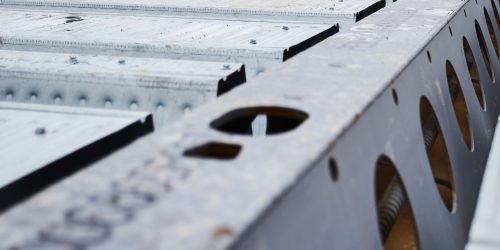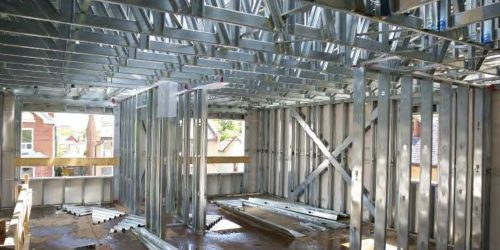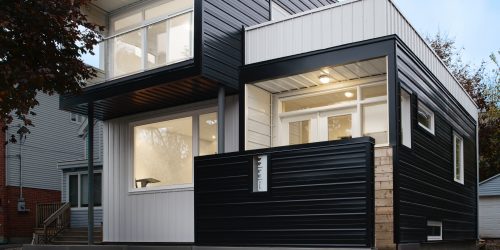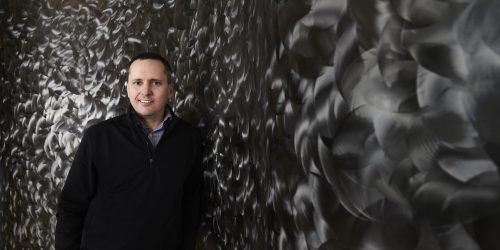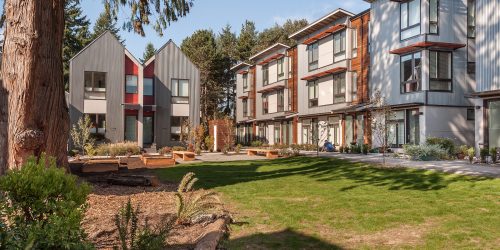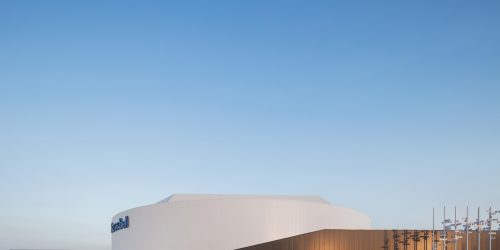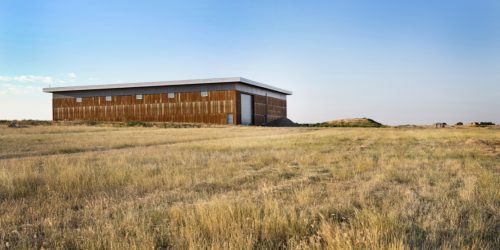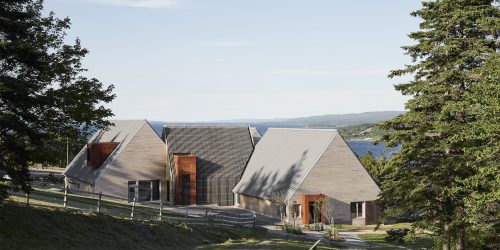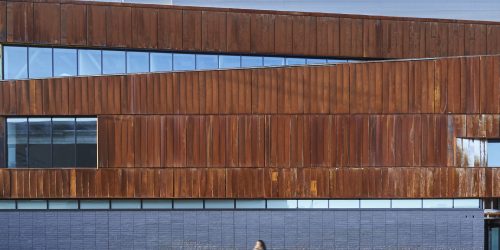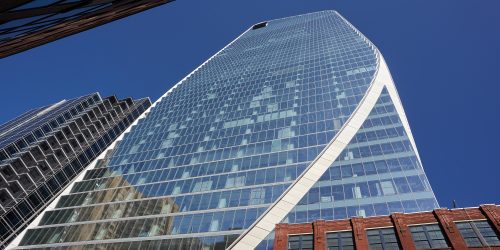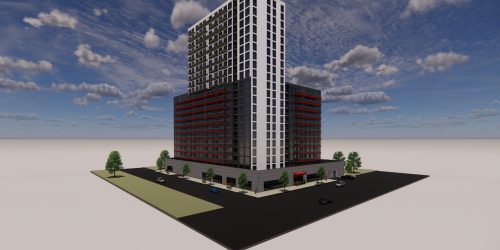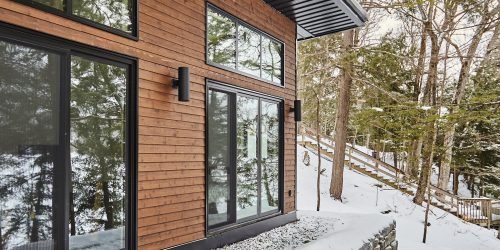Electric Feel
Dofasco’s Electric Arc Furnace is the key to ArcelorMittal’s XCarb® product offering and decarbonization goals
Story: Ian VanDuzer
Photography: Sandra Mulder

In 2020, the Canadian Steel Producers Association announced a new vision of the future of steelmaking. It was ambitious: to reach net zero carbon emissions by 2050. To do so would require a reimagining of the entire steelmaking process, from raw material acquisition to the furnaces themselves.
Even still, it’s an essential target to hit. The global steel manufacturing industry accounts for 7-10% of all carbon emissions each year. There’s no other way to put this: the steel industry has been an active contributor to climate change, but that also means that significant changes in the industry can have significant effects. Making plans to reduce and offset carbon emissions in the steel industry is
essential if we are to reduce the global effects of climate change.
Four years after the initial pledge, we are starting to see how each steelmaker is approaching the goal of net zero emissions. Central to ArcelorMittal Dofasco’s approach is the Electric Arc Furnace (EAF), a somewhat misunderstood technology that not only has the potential, but is proving to be effective in reducing emissions and producing high-quality, sustainable steel.
Fixing a Bad Reputation
It sounds like something from a comic book, a giant crucible full of lightning and plasma in a violent reaction to make glowing orange molten metal. But there’s nothing new or sci-fi about electric arc furnaces. Instead, the first EAFs were prototyped in the late-1800’s and were widely used during World War II to produce small volume batches of highly alloyed steels. After the war ended, EAF mini-mills for long products became more popular as an alternative for larger, more expensive integrated steel mills.
“Dofasco has been using an electric arc furnace to produce flat sheet for more than 28 years,” says Lisa Poort, Manager of Primary Process, Global R&D Hamilton. “I would say, more than 35 years ago electric arc furnaces were primarily used for long products in North America.”
That is to say, electric arc furnaces aren’t new and with the mini-mill expansion into thin slab flat sheet products, the popularity as a lower capital choice is growing. Dofasco’s EAF is unique compared to its mini-mill competitors. “Mini-mills produce and roll thinner slabs into flat sheet,” Poort explains. “Dofasco has the unique advantage of producing thick slabs and processing through a fully integrated hot mill, similar to the integrated flat rolled mills. So, there are misconceptions that electric arc furnaces are limited in the quality and types of steel that can be produced. The beauty of an EAF operation is the agility of the product mix with right mix of downstream processing assets and product experience.”
Pieces of the Puzzle
The agility Poort refers to is that the furnace is just one process in the larger steel production picture. “The functional purpose of the furnace is to melt your raw materials,” Poort says.
Poort says that the EAF’s capability is enhanced by other parts of the process. “The quality of steel is really dependent on its chemistry, internal quality and surface.” continues Poort. “Raw material selection, steel processing, casting and down stream operations combined with an experienced team all play a role in creating the perfect steel coil.”
Steel processing – the step after the materials are melted – is critical, says Poort. “If you have raw material controls in place, and a world-class steel refining, thick slab casting and processing facility, the result is exceptional steel that is making a wide variety of end uses that any basic oxygen furnace could make.”
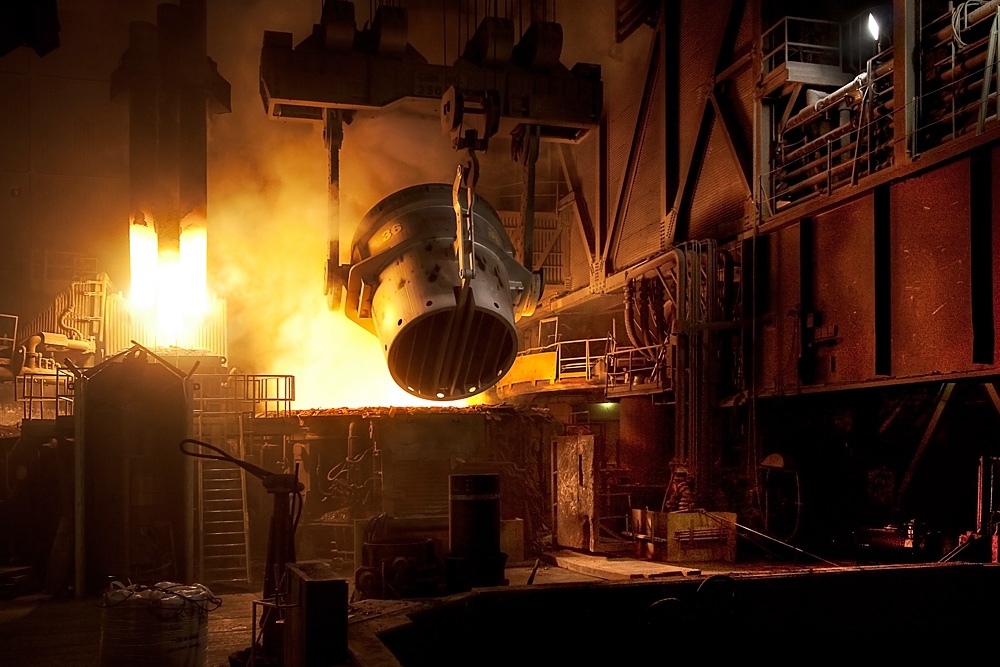
The Big Picture
But there are some products that you can create in an EAF and not in a basic oxygen furnace. High quality steel that requires low embodied carbon content, like ArcelorMittal’s XCarb® recycled and renewably produced steel, is uniquely suited and exclusive to the EAF.
“We now need to look at the embodied CO2 as an important product feature for our customers, and this is where an electric arc furnace really has an advantage over a basic oxygen furnace option,” Poort – whose team also contributes to the plant’s decarbonization transition – explains.
Basic oxygen furnaces produce CO2 in higher quantities. “The blast furnace - basic oxygen furnace route uses chemical reactions to generate heat, and the result of that is CO2,” Poort says. Electric arc furnaces use electrical energy to create iron-melting plasma which means that the electric arc furnace is as sustainable as its power supply.
In Hamilton, where ArcelorMittal Dofasco’s electric arc furnace is, means the electric arc furnace is powered mostly by nuclear- and hydro-generated electricity. That means low-embodied carbon throughout the entire process, making the electric arc furnace a key component of the steelmaker’s XCarb® product offering and push to net zero.
But, again, the furnace is only part of the equation. “On our existing electric arc furnace, we’re using a significant amount of scrap steel – a minimum 70% of our EAF charge mix,” Poort says. “Using scrap significantly cuts the carbon footprint of the electric arc furnace as well.”
There will always be a need for virgin iron in the process, Poort says, accounting for impurities in very sensitive steel grades. But overall, product lines like XCarb® recycled and renewably produced steel can use scrap, melted in an EAF powered by renewable energy, to create steel that meets – if not exceeds – the highest standards in construction. In this way, the EAF opens doors that are impossible to open using conventional basic oxygen furnaces.
The EAF Today
While ArcelorMittal Dofasco is working toward a new Direct Reduced Iron fed Electric Arc Furnace, their current EAF is operational and producing steel for customers that meet their most-demanding sustainability requirements.
“A high percentage of our current construction applications are being or can be produced in our furnace today,” Poort says. “We’re also making a lot of automotive end-use products –including some exposed parts – which is unheard of.”
“There are competitors that will say, it can’t be done, it’s impossible to make exposed steel parts off an electric arc furnace. Dofasco has actually been doing it for about 20 years now.”
The challenge today is not in producing the steel, Poort says, but in the education of steel buyers and end users that are purchasing and using the steel from ArcelorMittal.
“Understanding what products are available to support low embodied carbon construction projects and steel end uses is important for our customers to remain competitive as carbon footprint becomes an important deciding factor,” explains Poort. “Addressing the misconceptions that we’ve heard before. That ArcelorMittal Dofasco’s XCarb® recycled and renewably produced EAF steel is a viable, low carbon option.”
XCarb® steel currently produced exclusively in Dofasco’s electric arc furnace, has been seeing growing popularity amongst engineers and architects in their projects due to its strength and its ability to hit sustainability targets. And as progress towards net zero and decarbonization continues over the next decades, the prevalence of electric arc furnaces in the steelmaking process will only grow.
“The electric arc furnace solution is an integral part to meeting our sustainability goals.” she says.
SPECIFICATIONS
INTERVIEWEE:
Lisa Poort, ArcelorMittal Dofasco
INTERVIEWER:
Ian VanDuzer
PHOTOGRAPHY:
Sandra Mulder
